“Drive” has everything that makes a great action/revenge thriller. Its sequences are exhilarating, its style exquisite and dark, and its motivations clear. The precursor to Director Nicholas Winding Refn’s 2013 “Only God Forgives,” “Drive” reunites audiences once again with minimalist dialogue, purposeful filming, and a story that in essence tells itself, led by an ambient soundtrack and captivating acting. Money, power, influence. We’re used to revenge films set on these basic desires. “Drive” is a movie about a stuntman who also drives getaway cars on the side; but it’s also about more, involving the audience on an unwitting revenge trail fueled by the most unlikely emotion of all – love.
“Drive’s” central character, ‘Driver’ (Ryan Gosling), is a man cloaked in mystery. He drives stunt cars for movies. If a car he needs to flipped on cue, he’s the man to do it. He also works at a body shop and has an almost father-son relationship with the garage’s owner Shannon (“Breaking Bad’s” Bryan Cranston). However, much detail is left from him. His name, where he came from, or his past are not presented here; nor are his motivations. A chance meeting with his next-door neighbor Irene (Carey Mulligan) brings out a caring side to this unnamed stranger that is presented as a reprieve from a life cloaked in darkness. However, it isn’t long before her recently-released from prison husband – with debtors hot on his tail – puts Driver deeper into Irene’s life – and the city’s criminal underbelly – than he may have wanted to be.
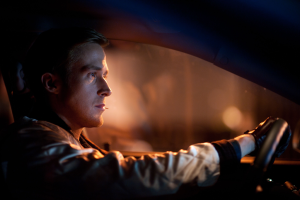
Nicholas Winding Refn here presents a movie shot more like an arthouse standard than a throw-a-way actioner, and the result is present throughout “Drive’s” run-time. Set in Los Angeles, the film avoids the need to shoot flyovers of skyscrapers or to set the stage with commonplace locations such as the Hollywood sign or the Capitol Records building. Fleeting glimpses of downtown are interspersed between racetracks where Driver works, the dingy garage that is his office, or the dark apartment that is his home. Refn’s Los Angeles feels both familiar and otherworldly, a place where criminal deeds happen with nonchalance and love happens without effort. Basked in an ever-present blanket of fading sunlight, “Drive’s” cinematography makes the city as much a character as the humans that inhabit it.
The acting in the film is top-notch, and while Refn’s films are not known for a plethora of dialogue, “Drive” presents enough to keep the flow even and steady while still allowing the camera tell as much of its story as its actors. Gosling here excels as Driver, particularly in scenes between he and Mulligan and Cranston. With little in terms of dialogue to cement the film’s more emotive scenes, Gosling convinces us he loves these two, perhaps equally, even if we never learn anything more about him. Best seen when he jumps to Irene’s defense when the situation calls for it, even if that defense includes helping her returned husband, as when he throws himself into the ring to protect Shannon even when it’s clear that it’s decidedly in his best interest not to.
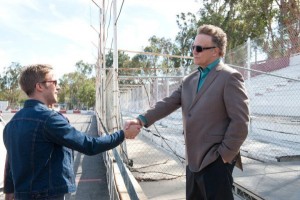 The film’s other players, from Cranston and Mulligan to Albert Brooks and Ron Perlman – who play some of L.A.’s criminal underlings – forward the story and convince us of the dire circumstance Driver has found him self in. Line-for-line, Brooks shows us he is a force to be reckoned with. It’s no surprise he was nominated for a Golden Globe for ‘Best Supporting Actor’ for his portrayal here.
The film’s other players, from Cranston and Mulligan to Albert Brooks and Ron Perlman – who play some of L.A.’s criminal underlings – forward the story and convince us of the dire circumstance Driver has found him self in. Line-for-line, Brooks shows us he is a force to be reckoned with. It’s no surprise he was nominated for a Golden Globe for ‘Best Supporting Actor’ for his portrayal here.
An ambient and purposeful score complements the film’s acting and cinematography, presenting a soundtrack that feels ‘80s but somehow is not; a score of techno and droning organs flushed against the revving of car engines and its own brand of bloody violence. “Drive” is rated ‘R’ and certainly earns it with scenes of gunshot wounds, bludgeonings, and stabbings, often amidst detached stares from their perpetrators. Some scenes are standard fare for action thrillers, such as a shootout at a hotel or a high-speed getaway that threatens to end disastrously at any moment. However, others are reminiscent of some of the more brutal scenes of “Only God Forgives,” such as a savage beating in an elevator or an intimidation with a claw hammer that teeters on the brink of stomach-turning. However, somehow “Drive” balances the violence with exposition. Innocent characters such as Irene or her son Benicio as spectators, as well as off-center, lingering cameras, gives them a detached, dreamlike feeling that makes the brutality ultimately forgiving.
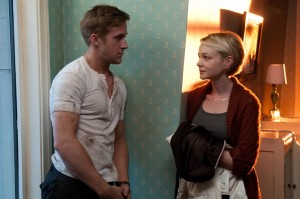
“Drive” is a departure from the kinds of action films we are used to seeing, but at the hands of Refn, Gosling, and company, is a welcome one. All the elements that make high-octane films entertaining and captivating are present here, but with more a sense of urgency than we’re used to seeing. Everything here is done with purpose, and the result is an unexpected sense of escapism and entertainment. “Drive,” not just an action movie, explores its characters, subtly making commentary on their motivations, drives, and emotions. If you’re looking for a movie with clear-cut villains and heroes, this isn’t the movie for you. “Drive’s” protagonists are anti-heroes to the fullest extent; however, sometimes it’s in the darkest corners that inspirations exist. “Drive” never comes out and says it’s about the pains of loneliness, or the ties of love, family, and loyalty. But it doesn’t really have to.
– by Mark Ziobro
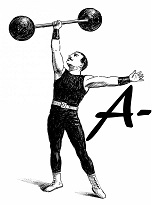

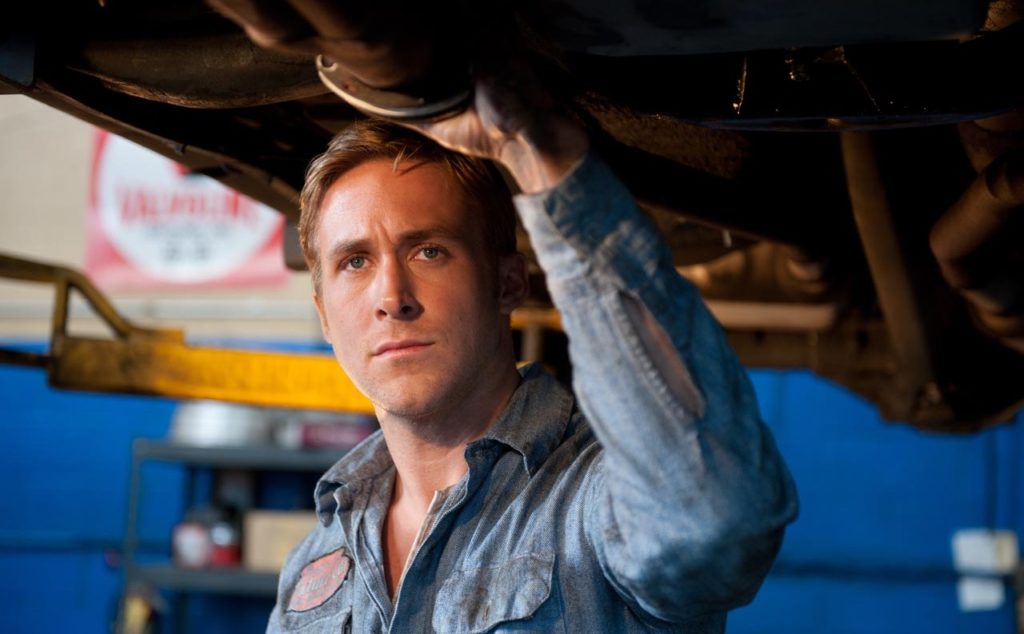
1 Comment
When this reviewer states this is not a action film I agree. The acting is fine but the film drags constantly . When the climax of the film arrives I had already fallen asleep. Waking up to decide this film is awfully boring and lacked direction.